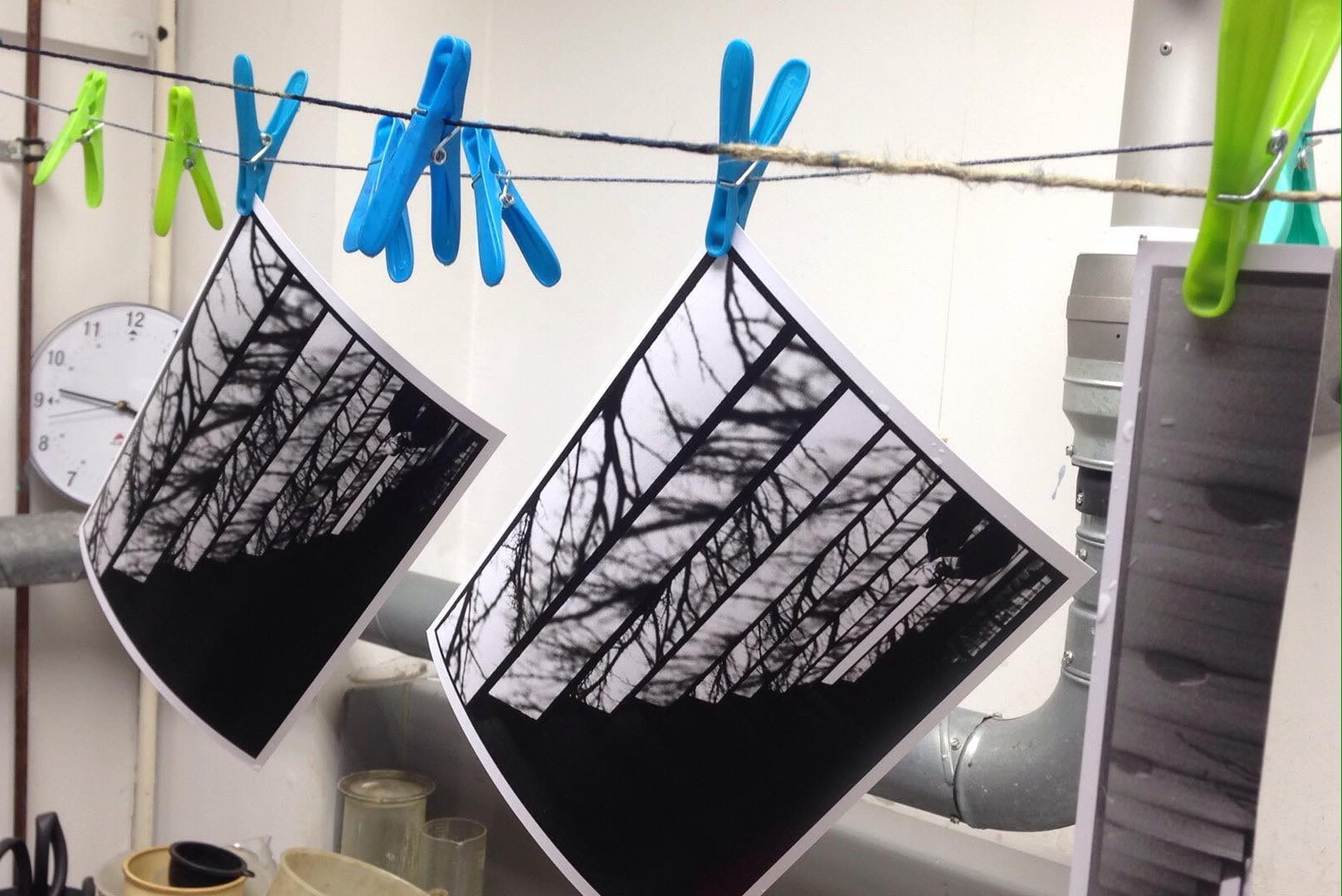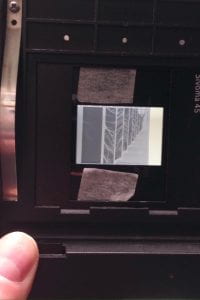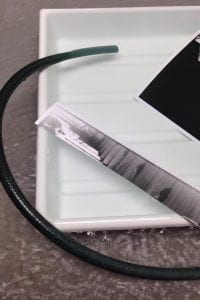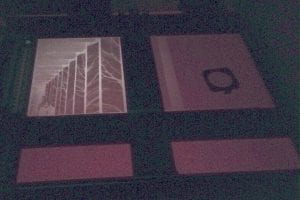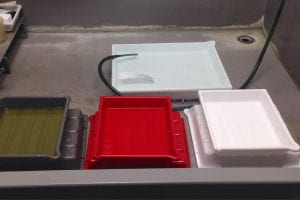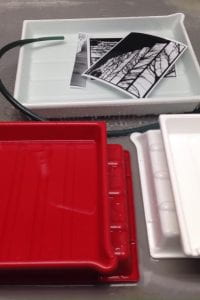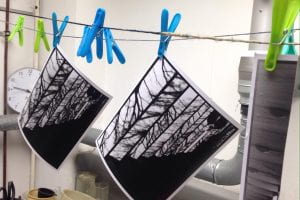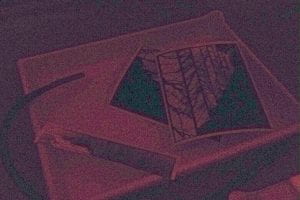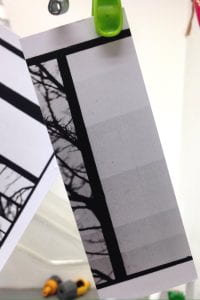Written by University of Dundee Museums volunteer Pete McConville
Follow Pete’s photography on his Instagram by clicking this link
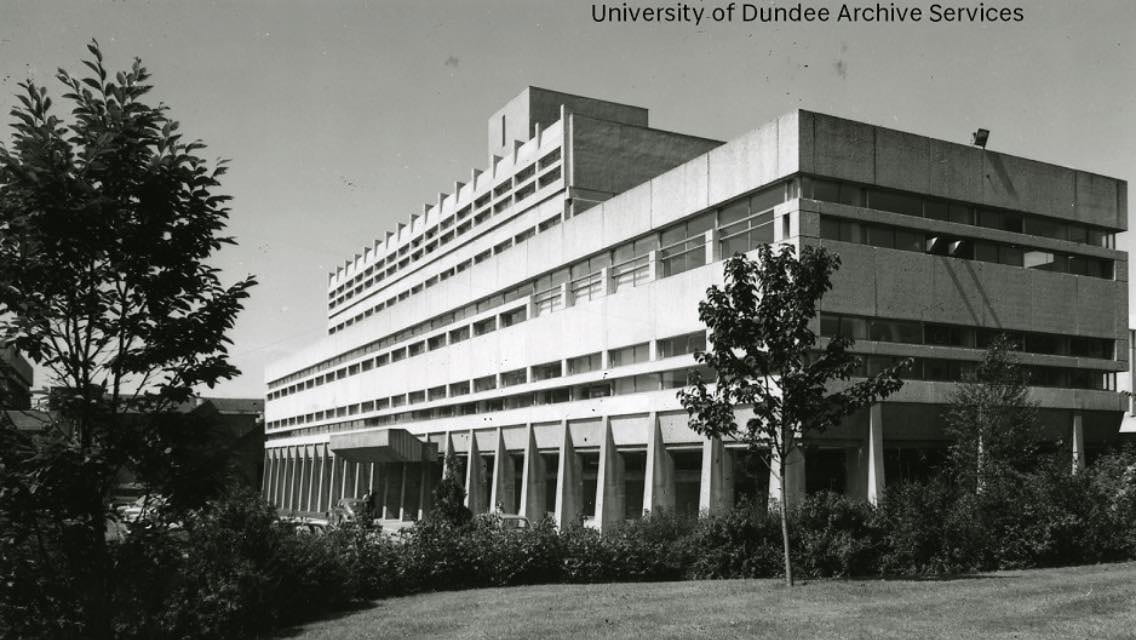
The University of Dundee campus is such a great place to photograph. So many styles of architecture and dynamic social spaces.
As the light changes from day to day and moment to moment it can really bring out different aspects of a place. I am fascinated how if we look out for these effects and become attuned to them; the same old places we see every day can be completely changed.
I try to be aware of this when I see a scene that draws me to photograph it but feels maybe that little bit incomplete. Even coming back in half an hour when the sun has moved a little, or waiting for the clouds to part can have a hugely transformative effect on how a place looks.
On the days I help out at the University of Dundee Museum Services in Hawkhill House I frequently walk past the Life Sciences building. Many mornings I have noticed how the inside of its pillared walkway can cast great shadows. One day I noticed the tips of the adjacent trees casting a shadow on one of the pillars and wondered how it would look on a harshly sunny day if the sun was a little further along in the sky.
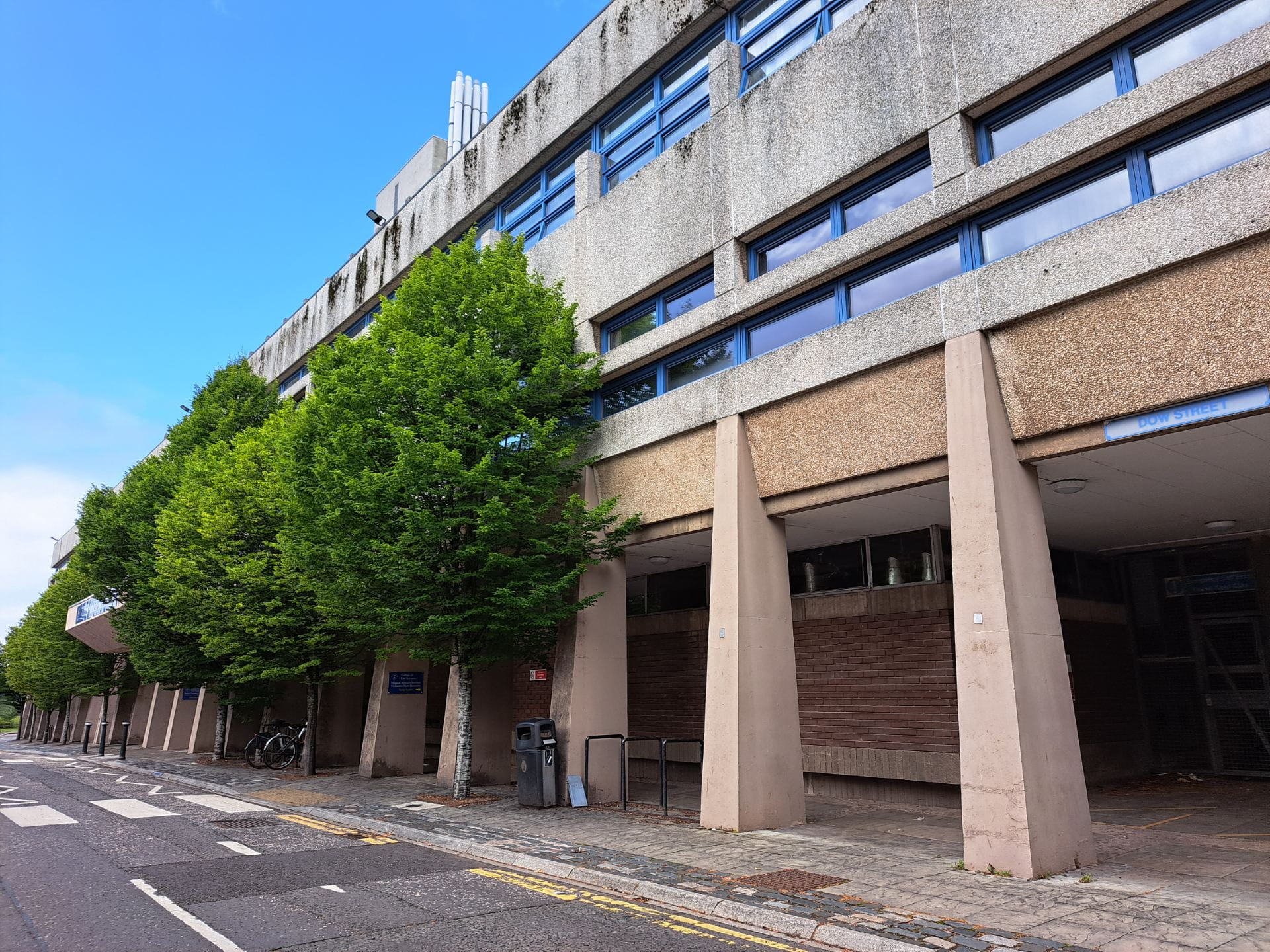
A few weeks later I was doing a photo shoot in the area and realised the conditions might be perfect. I hurried along to campus and the effect was stunning, mottled patterns of branches swayed slowly across the surface of each column. I quickly fitted a telephoto lens to my camera (they can flatten out perspectives) and lined up a shot. At that moment a man started walking towards me which suddenly gave the scene a sense of scale and I fired the shutter.
Back in the darkroom I developed the film (a slightly tedious process done partly in pitch darkness).
I then got in to the fun bit….printing!
How it works is the film from the camera once processed has an image on it called a negative (light things appear dark and visa-versa).
One image is selected and this is put into a little holder to keep it flat and clipped into an enlarger. This is essentially a lightbulb that shines through the negative, through a lens and then projects the image onto a flat easel below. The parts can be moved up and down to make the image bigger and focus it on the easel. This allows us to project the image onto light sensitive paper which when developed turns the negative image into a positive one that we can then put in a frame and hang on a wall. But first we have to figure out how long to shine light through the negative into the paper (making the image lighter or darker and allowing us to control the contrast).
What we do is get a narrow piece of this paper and shine various timed increments of light through the negative onto this ‘test strip’. This strip is then developed by using three trays of chemicals (known as baths). Firstly the developer which turns dark the parts of the paper that received the most light. After a minute or so the paper is transferred to the ‘stop bath’, which halts the process. Finally the paper goes into the ‘fixer’ which makes the image permanent and stops the paper being light sensitive. This whole process has to be done under a very dull red light of a wavelength that the paper does not respond to. Now we can put on the lights and put our newly developed test strip into a tank of running water to remove all the residual chemicals.
These can then be hung up to dry. By examining the test strip we choose which exposure time makes the nicest image and then use that timing to repeat the process but for the entire picture at once. The most exciting part is seeing the ghostly image slowly appearing on the paper as it develops.
The process can be repeated and the easel used to crop the image to get the best possible exposure and composition.
For my shot of the branch shadows I wanted the architecture to loom over the small figure, so I cropped it into a portrait orientation to accentuate the height. There is a famous Japanese photographer called Daido Moriyama who makes these super high contrast, stark photos. I wanted to employ this effect so by a careful use of filters made my final image have very dark shadows juxtaposed with harsh highlights. I hoped it would bring a graphic quality to the final image.
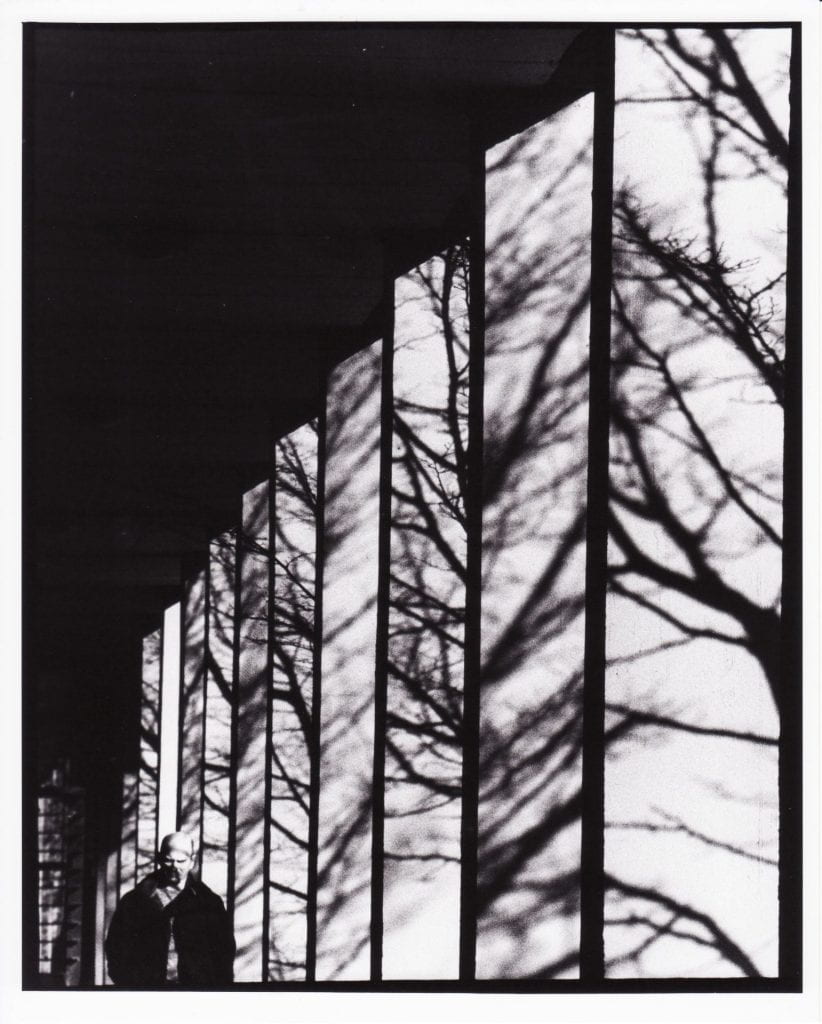
I was so pleased how the scene stopped looking so much like a walkway in the middle of the day and more like a row of surreal monuments dwarfing a small figure at night. Our eyes are constantly adjusting for brightness as we walk around, but strange scenes like this are unfolding around us all the time if we learn to keep an eye out for them.
I would like to hunt for more transformative scenes like these around the campus and make a small series of images, reframing the architecture into something new.
Follow University of Dundee Museums on Instagram by clicking here.
